Christine H. Foyer and W. Paul Quick0-203-48300-6, 0-203-79124-X
Table of contents :
Half-Title……Page 2
Title……Page 3
Copyright……Page 4
Dedication……Page 5
Contents……Page 6
Preface……Page 8
List of contributors……Page 10
List of abbreviations……Page 13
SECTION ONE Primary Nitrogen Assimilation, Carbon Assimilation and Carbon Partitioning……Page 20
1.1 Introduction……Page 21
1.2 Photosynthesis: general principles……Page 22
1.3 The Z-scheme, non-cyclic electron transport and photosynthetic energy conversion……Page 24
1.4 Carbon dioxide fixation and photosynthetic metabolism……Page 25
1.5 The maximum, limiting efficiency of photosynthesis: basic concepts……Page 27
1.6 Measurements of the maximum quantum efficiency for higher plant photosynthesis……Page 29
1.7 Non-cyclic electron transport and photosynthetic metabolism……Page 30
nsport ………Page 32
1.9 The detoxification of active oxygen species……Page 37
1.10 Manipulation of SOD activity……Page 38
1.11 Manipulation of the enzymes involved in glutathione synthesis and turnover……Page 40
1.12.1 Chlororespiration……Page 42
1.14 Conclusions and perspectives……Page 43
References……Page 45
2.2 Photosynthetic CO2 fixation in green leaves: the pathway……Page 58
2.3.1 Regulation of Rubisco……Page 61
2.3.2 Thiol-reduction……Page 62
Rubisco……Page 63
Rubisco activase……Page 65
Glyceraldehyde 3-phosphate dehydrogenase (GAPDH)……Page 66
Sedoheptulose 1,7-bisphosphatase (S1,7P2ase)……Page 67
Phosphoribulokinase (PRK)……Page 68
Aldolase……Page 69
2.6 Starch degradation in chloroplasts……Page 70
2.6.1 Are there plastid type specific products of starch degradation?……Page 71
2.7.2 CO2 fixation by fruit chloroplasts……Page 72
2.8 Other metabolic pathways affected by photosynthesis……Page 73
2.9 Modulation of transport properties across the plastid envelope……Page 75
References and further reading……Page 76
3.1 Photosynthetic sucrose biosynthesis in C3 plants……Page 81
activities ………Page 83
Analysis of plants with reduced cytosolic fructose 1,6-bisphosphatase activity……Page 84
3.1.2 Molecular approaches to alter sucrose-phosphate synthase activity in transgenic plants……Page 86
3.2 Manipulation of sucrose metabolism in phloem cells……Page 88
3.3 Sucrose utilization in sink tissues……Page 89
References……Page 92
4.1 Introduction……Page 98
4.2.1 The accepted biosynthetic pathway……Page 99
4.2.2 Evidence for the pathway……Page 100
4.3.1 Subunit structure……Page 101
4.3.2 Regulatory properties……Page 102
4.3.3 Evidence for in vivo regulation of ADPGIcPPase……Page 103
4.3.4 Function of the higher plant ADPGlcPPase subunits……Page 105
4.3.5 Identification of the glucose-1-phosphate and ATP binding sites……Page 107
4.3.6 Identification of the activator sites……Page 108
4.4 Are starch synthases or branching enzymes rate limiting in starch synthesis?……Page 110
4.5 Increasing starch content by transforming plants with an allosteric mutant ADPGlcPPase gene……Page 112
zyme in in vivo synthesis of amylopectin ………Page 114
References……Page 117
5 Molecular crosstalk and the regulation of C- and N-responsive genes……Page 123
5.1 Metabolite responsive genes in higher plants……Page 124
5.3 Genes up-regulated by low C/N, C-starvation, and/or N excess……Page 127
5.4 Genes up-regulated by high C/N, C-abundance, and/or N-depletion……Page 129
5.5 Contrasting C/N responses of isozyme genes……Page 131
5.6 Metabolite effectors of crosstalk in expression of C- and N-responsive genes……Page 133
5.7 Closing comments……Page 135
References and further reading……Page 136
6.1 Introduction……Page 142
6.2.1 Manipulation of NR……Page 146
Nitrogen deficiency……Page 147
CO2 enrichment……Page 148
6.2.3 Constitutive expression of an NR protein involving a 5′ end deletion……Page 149
6.2.4 Transformed plants with altered activities of glutamine synthetase and glutamate synthase……Page 150
6.3 Sucrose biosynthesis……Page 155
6.3.7 Over-expression of SPS……Page 157
6.3.2 Relative growth rates (RGR) and biomass production in tomato plants expressing a maize SPS cDNA……Page 159
6.4 Conclusions and perspectives……Page 162
References and further reading……Page 164
7.1 Ammonia assimilation……Page 172
7.2 Manipulation of glutamine synthetase genes……Page 173
7.2.1 Over-expression of cytosolic glutamine synthetase……Page 174
7.2.2 Antisense modulation of GS activity……Page 177
7.2.3 Alternative approaches to down-regulate glutamine synthetase……Page 179
7.3 Modulation of other nitrogen assimilatory enzymes……Page 180
7.4 Modulation of the aspartate pathway……Page 181
7.5 Manipulation of aromatic amino acid biosynthesis……Page 183
7.6 Manipulation of branch chain amino acid biosynthesis……Page 186
7.7 Modulation of proline synthesis……Page 187
Acknowledgments……Page 188
References……Page 189
8.1 Introduction……Page 195
8.2.1 Reversible protein phosphorylation as a regulatory device in eukaryotes……Page 196
8.2.2 Eukaryotic protein kinases……Page 198
8.2.3 Eukaryotic protein (serine/threonine) phosphatases……Page 199
8.2.4 Prokaryotic two-component systems……Page 201
8.3.1 Comparing metabolic and developmental control in plants and animals……Page 202
8.3.3 Reversible protein phosphorylation in chloroplasts and other plastids……Page 203
8.3.4 Reversible protein phosphorylation in mitochondria……Page 204
8.3.5 Reversible protein phosphorylation in the cytosol……Page 205
6PF2K/Fru2,6P2ase……Page 206
Sucrose phosphate synthase……Page 207
Nitrate reductase……Page 208
PEPCase In CAM, C4 and C3 metabolism……Page 209
8.3.6 Evidence for co-regulation of SPS, NR and PEPCase in C3 leaves……Page 210
8.4 Perspectives for future developments……Page 212
References and further reading……Page 214
SECTION TWO Compartmentation, Transport and Whole Plant Interactions……Page 219
9.1 Introduction……Page 220
9.2.2 Subcellular metabolite distribution……Page 221
9.2.3 Concentrations of exported products in the apoplast and the sieve tubes……Page 222
9.3 Subcellular concentrations of phosphorylated intermediates between chloroplast and cytosol……Page 223
9.4 Subcellular distribution of sugars and malate……Page 224
9.5 Subcellular distribution of amino acids……Page 226
9.6.7 Exported assimilates and export pathway……Page 227
9.6.2 Concentration gradients along the export pathway……Page 228
9.7 The role of phloem loading for the composition of storage sinks……Page 229
References……Page 230
10.1 Cell-to-cell transfer of sucrose in source leaves……Page 233
10.2 Conundrum of plasmodesmata connecting PP–CC……Page 236
10.3 Long-distance sucrose transport and resource allocation……Page 237
10.4 Viral infection alters carbohydrate partitioning……Page 238
10.5 Viral movement protein alters carbohydrate metabolism and allocation in transgenic tobacco plants……Page 239
10.6 TMV-MP has pleiotropic effects on plant function……Page 240
10.7 Source leaves may be the site of TMV-MP action……Page 242
10.9 Regulation of sucrose transport by plasmodesmal SEL……Page 243
rtitioning and resource allocation ………Page 244
References……Page 247
11.1 Introduction……Page 251
Nitrate……Page 252
Ammonium……Page 253
Amino adds……Page 255
Other N transporters at the cellular and plant levels?……Page 256
Regulation at the cell and plant levels……Page 257
11.3.1 Symbiotic N2 fixation……Page 260
11.3.2 Regulation of N2 fixation by N status……Page 261
11.3.3 Nitrate and ammonium assimilation……Page 262
11.4 Conclusions and perspectives for future engineering……Page 263
References……Page 264
12.1 Introduction……Page 269
12.2 The whole plant nitrate assimilation pathway……Page 270
12.2.1 Root growth……Page 272
12.2.2 Nitrogen transport……Page 273
12.2.3 Nitrate assimilation in the root……Page 274
12.3 Rhythms in nitrate uptake and leaf development……Page 275
12.4 Shoot control involving malate and amino acids……Page 276
12.5 Nitrate assimilation in the shoot……Page 278
12.5.1 Nitrate delivery in the xylem……Page 279
12.5.2 The role of nitrate reductase……Page 280
12.6 Summary: the integrated plant response……Page 281
References……Page 282
13.1 Introduction……Page 288
Carbohydrate pools……Page 290
13.2.3 Assimilate allocation in mycorrhizal plants……Page 291
Transfer of carbohydrates……Page 292
Regulation of assimilate allocation……Page 293
13.3.1 VA-mycorrhizas……Page 294
Nitrogen metabolism……Page 295
Utilization of organic nitrogen……Page 296
Carbon/nitrogen interactions and exchange at the symbiotic interface……Page 297
References and further reading……Page 299
SECTION THREE Related Metabolism……Page 306
14.1 Introduction……Page 307
14.2 Structure and regulation of the alternative pathway……Page 308
14.2.1 Molecular biology of the alternative oxidase……Page 309
14.2.3 Regulation of the alternative oxidase……Page 310
14.3 How to assess the activity of the alternative pathway?……Page 313
14.4 The physiological function of the alternative pathway……Page 314
14.4.2 Energy overflow……Page 315
14.4.4 Continuation of respiration in the presence of inhibitors, including CO2……Page 316
Acknowledgments……Page 317
References……Page 318
15.1.1 Carbon and energy sources for fatty acid synthesis……Page 322
15.1.2 Fatty acid synthesis……Page 324
15.1.3 Glycerolipid synthesis……Page 325
15.2.1 Acetyl-CoA carboxylase manipulation……Page 327
15.3.1 Medium chain fatty acids……Page 328
15.3.2 Very long chain fatty acids……Page 330
15.4 Modification of double bonds in the fatty acids of seed oils……Page 331
15.4.3 Unusual monounsaturated fatty acids……Page 332
15.4.4 Fatty acid hydroxylase……Page 333
15.5 Effects of manipulation of fatty acid composition on plant physiology……Page 334
15.5.1 Chilling sensitivity……Page 335
References……Page 336
16.1 Introduction……Page 338
16.2 Increased photosynthesis gives increased yield (sometimes!)……Page 339
16.3 Integration links supply and demand (via assimilate abundance?)……Page 340
16.4 Flexible allocation strategies do occur: the distinctiveness of temperate grasses……Page 341
16.5 Whole plant resource allocation: how efficiently are sources and sinks integrated?……Page 343
16.6 Concluding remarks: the scope for improvement in the efficiency of resource use……Page 344
References and further reading……Page 345
Index……Page 348
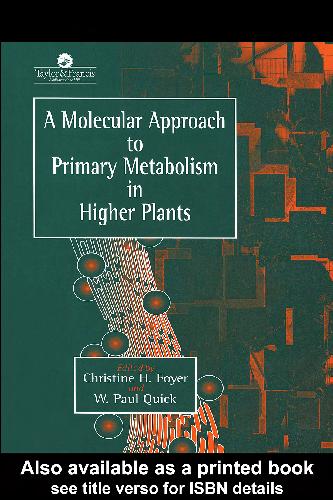
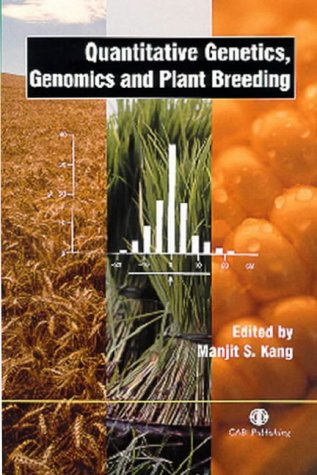

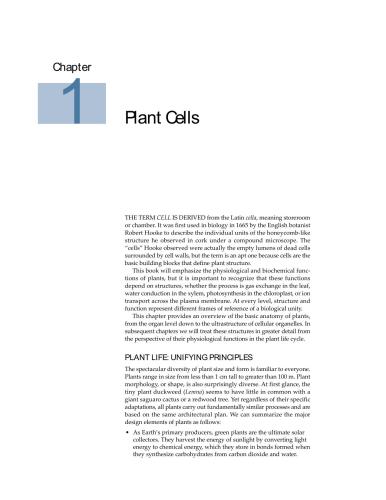
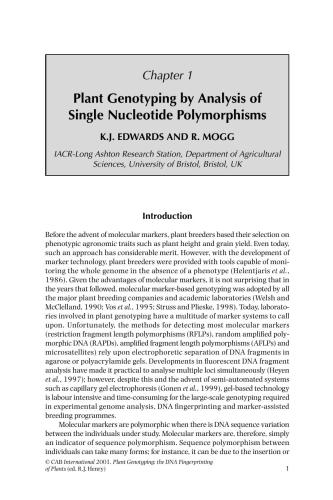
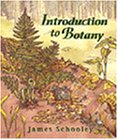
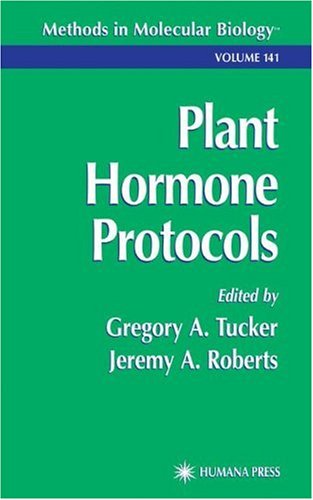
Reviews
There are no reviews yet.